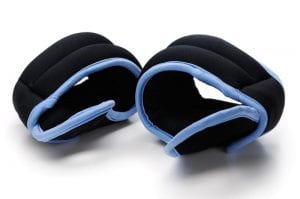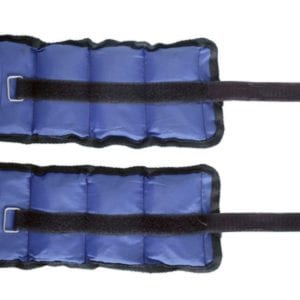 By wearing wrist and ankle weights while walking or hiking you can increase the benefits of your workouts.
By wearing wrist and ankle weights while walking or hiking you can increase the benefits of your workouts.
This is because the weights add resistance with every step you take. With added resistance, moving will require more effort, and as a result, you will burn more calories.
Along with aiding weight loss, walking with ankle and wrist weights increases aerobic and muscle toning benefits, stamina, and endurance.
While there are faster ways to get into shape, walking is one of the most organic exercises we can do. Simple and with no equipment requirements, it is ideal for individuals who want to lose weight or prevent weight gain.
A low-impact activity, people of any fitness level can walk to improve their fitness.
Though not recommended if you are just embarking on a walking program, if you’ve been exercising for a while and feel your workouts aren’t benefitting you as much as they used to, incorporating weights will increase the challenge.
And, you will be able to get these benefits without increasing your pace, the distance you cover, or the time you spend walking.
This article will look at how wearing wrist and ankle weights can improve your fitness. It will also touch on any possible associated risks and how to avoid them.
Click here to find out how to choose ankle weights and to read reviews of 10 of the best wrist and ankle weights for women (and men).
Table of Contents
Wrist and Ankle Weights Weight Loss Benefits
According to research undertaken by the University of Alberta, Edmonton, Canada, wearing wrist weights while walking burns additional calories. This can result in more significant weight loss than walking for exercise without wearing wrist weights.
calories. This can result in more significant weight loss than walking for exercise without wearing wrist weights.
The study referenced above also proved that wearing wrist weights while walking improves cardiovascular health.
There are some potential risks to using wrist and ankle weights during exercise. However, when used correctly, strap-on weights can be very beneficial.
According to the American Council on Exercise (ACE), wearing wrist weights of between 1 and 3 pounds when exercising can elevate your heart rate by as much as ten beats per minute. As a result, you will burn up to 15% more calories.
While slightly less beneficial, wearing ankle weights of between 1 and 3 pounds can increase the heart rate by up to 5 beats per minute and calorie burn by as much as 10%.
Muscle Toning Benefits
As with dumbbells, strap-on weights provide a combination of cardiovascular and strength training, which helps to build muscle.
Walking wearing wrist weights can be beneficial because your muscles will contract against the weight’s resistance when doing so. This will help develop your muscle mass and increase your endurance and strength. Your balance and coordination are also likely to improve.
Wearing ankle weights while walking will help to tone your calves and thighs, plus your hamstrings, buttocks, and abs.
Click here to read an article on the benefits of walking for 30 minutes a day.
Potential Risks
The possibility of sustaining an injury is present with any exercise. Wearing ankle weights while walking is no exception as it tires the muscles faster, placing extra strain on the ankles, hips, and knee joints.
Walking with ankle weights could affect your gait, causing you to walk in an unnatural or unbalanced fashion. This can negatively affect posture, further putting your joints at risk of injury.
Wearing wrist weights that are too heavy can lead to muscle pain in the shoulders, upper chest, and arms and joint pain in the wrists and elbows.
How to Start Using Wrist and Ankle Weights
When you first start wearing wrist and ankle weights, use light weights and keep your sessions short.
Be sure to securely attach the weights and walk as you usually do. Taking very long steps and exaggeratedly swinging your arms can result in muscle strain.
If you want to try just one set of strap-on weights, try ankle weights.
The likelihood of ankle weights causing injury is lower than that of wrist weights.
Wrist weights that are too heavy are linked to the possible development of RSI and carpal tunnel syndrome, so start light.
How to Avoid Injuries When Walking with Wrist and Ankle Weights
If you have an injury or suffer from upper or lower body joint pain, strap-on  weights can exacerbate the problem.
weights can exacerbate the problem.
If you’re in doubt as to whether they will harm or benefit you, consult your healthcare provider or a certified personal trainer.
If you are reasonably fit, are not experiencing any joint pain, and you want to try using wrist and ankle weights while walking, start with very light weights and only wear them for a few minutes at a time initially.
You can increase the weight and length of time you wear them when you become stronger.
Don’t wear strap-on weights every time you walk. Doing so could strain your tendons, joints, and muscles.
Choose weights that enable you to walk with correct form and good posture.
Walking will be awkward at first. This is normal. If, however, you experience pain, stop using the weights or try lighter ones.
If you experience pain while using the lightest available strap-on weights, look for other ways to increase the challenge and benefits of your workouts.
This could involve forgoing ankle and wrist weights in favor of carrying light hand weights.
Another option is to ditch the weights entirely and walk for longer, increase your pace, or change your route to include some hills.
Wrist and Ankle Weights Benefits Summary
You can attain numerous health benefits by walking for between 20 and 60 minutes at least 3 times a week.
Along with enabling you to either lose weight or maintain your current weight, this walking schedule will improve your cardiovascular health and muscle tone over time.
either lose weight or maintain your current weight, this walking schedule will improve your cardiovascular health and muscle tone over time.
Remember, no exercise is entirely risk-free. However, the potential benefits of wearing light ankle and wrist weights while walking outweigh the risks.
If you stick with weights in the 1 to 3-pound range, you will significantly boost your walk’s fitness benefits and be less likely to suffer an injury.
You may also like to read about The Benefits of Exercising with a Weighted Vest.

